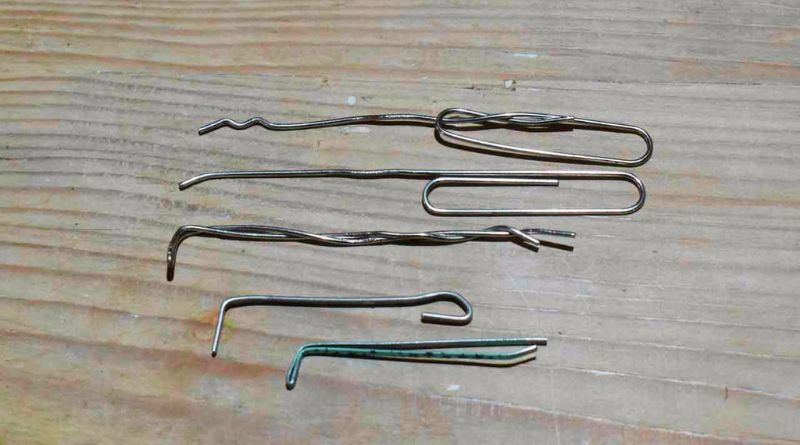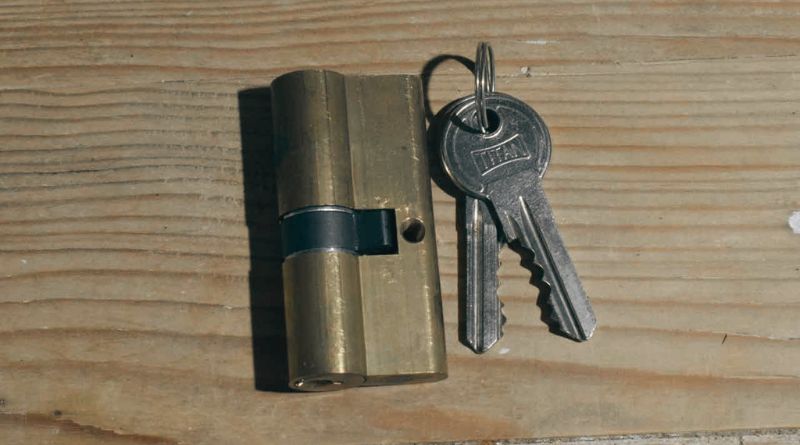Lock Picking An Urban Survival Skill
An urban survival skill everyone should know, lock picking is an underrated and often maligned skill. Commonly associated with criminals and petty theft. But the truth is Lock picking can come in handy in a wide variety of urban survival situations.
Lock Picking An Urban Survival Skill
In an emergency, emotions are high, people get flustered and mistakes are made. People rush and slam their car doors forgetting the keys inside, or close the front door with the keys inside. Lock picking is often an overlooked urban survival skill. Many survivalists prepare for outdoor survival without preparing for a possible urban SHTF situation.
Basic Anatomy Of A Lock
We will be discussing the basic anatomy of a pin-tumbler lock, as this is the most common and easiest lock to pick for beginners.
The majority of padlocks, deadbolts, and doors use a pin-tumbler lock.
The lock has a cylindrical casing, there is a cylindrical plug in the casing. This is the section that turns when the key is turned.
The plug contains a set of pins that the key comes into contact with when inserted into the lock. These are called key pins or bottom pins.
In the cylinder, there are a set of pins with springs pushing them down. These are the driver pins or top pins.
The driver pins push down on the key pins. To unlock, the key is inserted into the plug. The key aligns the top and bottom pins along the shear line so that the lock may be turned.
Locksport Contests
Locksport is a hobby sport whereby contestants compete in lockpicking. While lockpicking as a hobby has been around as long as locks have. It has not been popular in mainstream society until fairly recently.
For those interested in Locksport, The Open Organisation Of Lockpickers, or TOOOL as they are known are recognized as leaders in the Locksport community of recreational ethical lockpicking.
Lock Picking Tools
Caveat Emptor (let the buyer beware): before buying or making a set of lockpicking tools. Make sure to check the local laws. In some countries/states, just owning or carrying a set of lock-picking tools is illegal. That said, let us discuss basic lock-picking tools. These are by no means the only tools on the market. But they should get the job done.
Tension Wrench
A tension wrench is an L-shaped tool used to apply torque while either a feeler pick or rake pick is used. A little tip: apply gentle pressure, too little and the plug won’t turn when the pins align along the shear. Too much pressure and the pins may not catch along the shear line when raking.
Rake Picks
A rake pick works by snapping the pins up and hopefully aligning the pins along the shear line. Work the rake at different angles, pressures, and speeds, wiggle the rake around, wobble it up and down, and try moving it in a variety of ways. All while maintaining a steady gentle pressure on the tension wrench.
Feeler Picks
The single pin lock picking method uses a feeler pick, to align each pin one by one along the shear line. Use a tension wrench to exert gentle pressure, insert the feeler pick and align one pin at a time. Once all the pins are aligned the lock will open.
Snap Guns Do They Work
A snap gun was originally designed to assist law enforcement with opening locks. The snap gun simplified the process so that officers would not need lengthy training. Wikipedia Snap Gun
A snap gun works using the same principles as a Bump key. By snapping/bumping the key pins of a lock-up. The key pins snap the driver pins up just enough to open the lock, without blocking the lock cylinder.
Snap guns are very effective at opening pin tumbler locks, they work very well and much quicker than manual lock picking.
Bump Key Tip
A bump key works by filling down all the valleys to a depth of 999, the key then works using the same principles as the snap gun. The key is bumped, and the kinetic energy is transferred from the key pins to the driver pins.
If done correctly, the key pins will barely move, but the driver pins will snap up above the shear line enabling the lock to be opened.
I thought this video was very well done and explained how to use a bump key perfectly.
Using a bump key takes a little bit of practice, but it works quite well, as long as the bump key fits in the lock. With so many types of locks out there, having a bump key that fits, means carrying around a pocket full of bump keys of varying sizes. The tip in the YouTube video of putting a rubber washer on the bump key was innovative.
Cutaway And Transparent Locks
These locks are designed for the beginning lockpicker to practice their skills. Being able to see the pins as they are being picked is a good way to understand the concepts of how a lock works. With cutaway/transparent locks, it is easy to see each pin, as it aligns along the shear line.
Most people learn how to pick a lock while holding it in their hands. While this is an acceptable way to start. To practice this skill it is best to simulate real-life conditions. With that thought in mind, we recommend padlocks be locked on a fence. Door locks are held in a vice while they are picked. This simulates the door lock in a door.
Security Weaknesses
Once a person learns how to pick a lock, they can then examine the weak points in their homes security.
Home Made Lockpicks
Learning how to pick a lock with homemade lockpicks is not that difficult. And it has the added benefit of being extremely budget-friendly. Lock picks can be made using common household items such as:
Bobby pins
Safety Pins
Paper Clips
Various items around the home can be bent and twisted into shape.

Urban Survival Skill, Lock Picking
As a teen I learned to pick locks for fun, it wasn’t a popular hobby. None of the people I knew had any interest in it. But even then it came in handy. I have opened doors for friends and family when they lost their keys (saving them the trouble of calling a locksmith, which is quite costly).
Have opened car doors when the owners had accidentally locked the keys in the car. And once had to open a car door where the child was in the car and had fallen asleep, the mother in a panic was trying to break the window with a brick. (don’t even get me started on the ridiculousness of leaving a child in the car while picking up groceries). For some lock-picking is a recreational pastime, for others lock-picking is an urban survival skill to be used in times of emergency.

Ethical Lock Picking
Lock picking has long been associated with criminal activity, a budding recreational lock picker needs to be aware that there are certain rules regarding this hobby.
Rule One on Ethical Lock-picking
Only pick locks that you own, or if given permission by the owner of the lock.
Other than it is just plain wrong to practice lock picking on someone else’s lock, it is also against the law.
Rule Two on Ethical Lock-picking
Never pick a lock that is in use, eg: a padlocked gate, bicycle, door, etc.
I have seen some enthusiastic beginners attempt to lock-pick their front door. They damaged the lock and then had to break it to get into their own home.
Be aware there is a chance that the lock you are picking may get damaged and jam. If you practice your skill on a lock that is in use and it gets damaged to the point it cannot be unlocked, even with the key. Well… that could be very inconvenient.